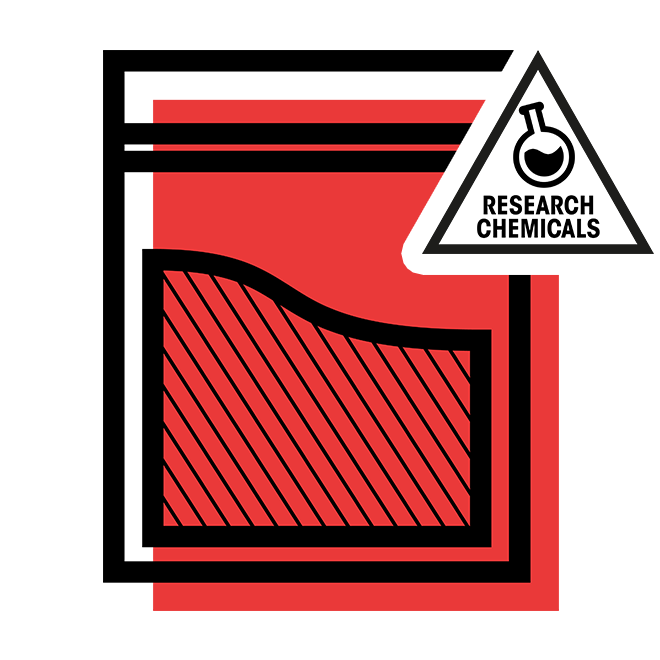Methylone (bk-MDMA) has a stimulating and empathogenic effect (increasing sensitivity and empathy for other people and the environment) and can be described as similar to MDMA: at the beginning, the stimulating effects such as accelerated heartbeat, hot flushes, sweating and restlessness predominate, but these quickly subside. Afterwards, users report a pleasant feeling of warmth in the stomach, neck and chest. A feeling of contentment, calm euphoria, serenity and relaxation is described. A strong feeling of connection with the immediate surroundings sets in, whereby the willingness to communicate increases and inhibitions fall. According to users, thoughts remain clear and the flow of thoughts is not interrupted by drifting and impairment of short-term memory. According to some reports, visual hallucinations can occur with eyes open and closed. Some users describe the effect as almost identical to that of MDMA, while others experience the effects more as hallucinogenic. The effects of methylone appear to be highly dependent on the current mood, the environment in which it is consumed and the type of consumption. According to some reports, the empathogenic effect is lost when methylone is consumed nasally. Similarly, the stimulating effects appear to come to the fore when higher doses are consumed.
The stimulating effects are in the foreground, especially at high doses. This leads to restlessness, accelerated heartbeat, increased blood pressure and strong trembling (tremor) of the entire body. In addition, eye tremors (nystagmus), spasms of the masticatory muscles and twitching of the facial muscles are likely to occur. The body temperature rises and the body may overheat (hyperthermia), which is dangerous to health. Nausea and vomiting may also occur. Feelings of hypersensitivity to music and noise, feelings of loss of control, confusion, anxiety, paranoia and fear are also possible.
Methylone increases the release and inhibits the reuptake of the neurotransmitters dopamine, noradrenaline and serotonin, resulting in an increased concentration of these in the synaptic cleft. The inhibition of serotonin reuptake with methylone is probably only one third of the potency compared to the inhibition with MDMA. Dopamine and noradrenanline are inhibited to a similar extent as by MDMA.
Methylone has hardly been researched at present, which makes it impossible to make well-founded statements about possible long-term effects. It can be assumed that frequent consumption of methylone can lead to psychological dependence. Whether it can lead to physical dependence is unclear. Users report very rapid onset of habituation effects, i.e. the dose must be increased in order to achieve the desired effects.
- Restlessness or anxiety
- Mood disorders and psychological complaints
- High blood pressure
- Pregnancy / during breastfeeding
- Cardiovascular problems / diseases
- Liver or kidney damage
- Epilepsy
If methylone is consumed despite the health risks, the following should be observed - in addition to general risk reduction advice:
- If you have the opportunity, have your substances chemically analysed.
- Do not combine methylone with other substances or medications.
- If you consume substances nasally, do not share your tube with others. There is a risk of infection.
- According to users, set and setting play a major role with methylone. Therefore, only consume it in pleasant places and with familiar people.
- Consume with friends who can offer each other support and who you can rely on. Discuss this in advance and don't leave the other person alone.
- Take rest breaks and cool down.
- Oral consumption is probably the least risky form of consumption, as there is hardly any danger of contracting communicable diseases. However, bear in mind that it is not possible to reduce the dose afterwards. So only take a small amount of the substance.
- Take longer breaks before your next consumption.
- Never drive a vehicle on the road after consumption.
Like MDMA, methylone belongs to the group of β-phenylethylamines (within this supergroup, methylone belongs to the subgroups of amphetamines and cathinones). Methylone has almost the same chemical structure as MDMA, although the structure of methylone has an additional oxygen group. Methylone is therefore also known as bk-MDMA (β-keto MDMA). Other, less well-known street names are Ease and M1. Methylone is usually sold as a white to light brownish powder, but it can also be found in liquid form or in capsules and pills and is usually consumed orally or nasally.
Users speak at the oral consumption 100-150 mg is a light dose, 150-250 mg is a normal dose and 200-300 mg is a high dose, whereby the effect sets in after about 15-60 minutes and lasts for about 2-3 hours. With nasal consumption users dose much lower and speak of a light dose at 35-80 mg and a usual dose at 80-150 mg. Consumed nasally, the effect occurs after
5-10 minutes and lasts for approx. 1-2 hours.
Methylone (bk-MDMA) is covered by the Narcotic Drugs Act. The acquisition, possession, import and export, transfer to and procurement for others (transfer and sale) are punishable by law. Consumers who violate the SMG must expect a mandatory visit to the public health officer (in Vienna: the Institute for Addiction Diagnostics). The doctor can then order health-related measures. If you adhere to these requirements, there will be no court proceedings.
Status: 2012

